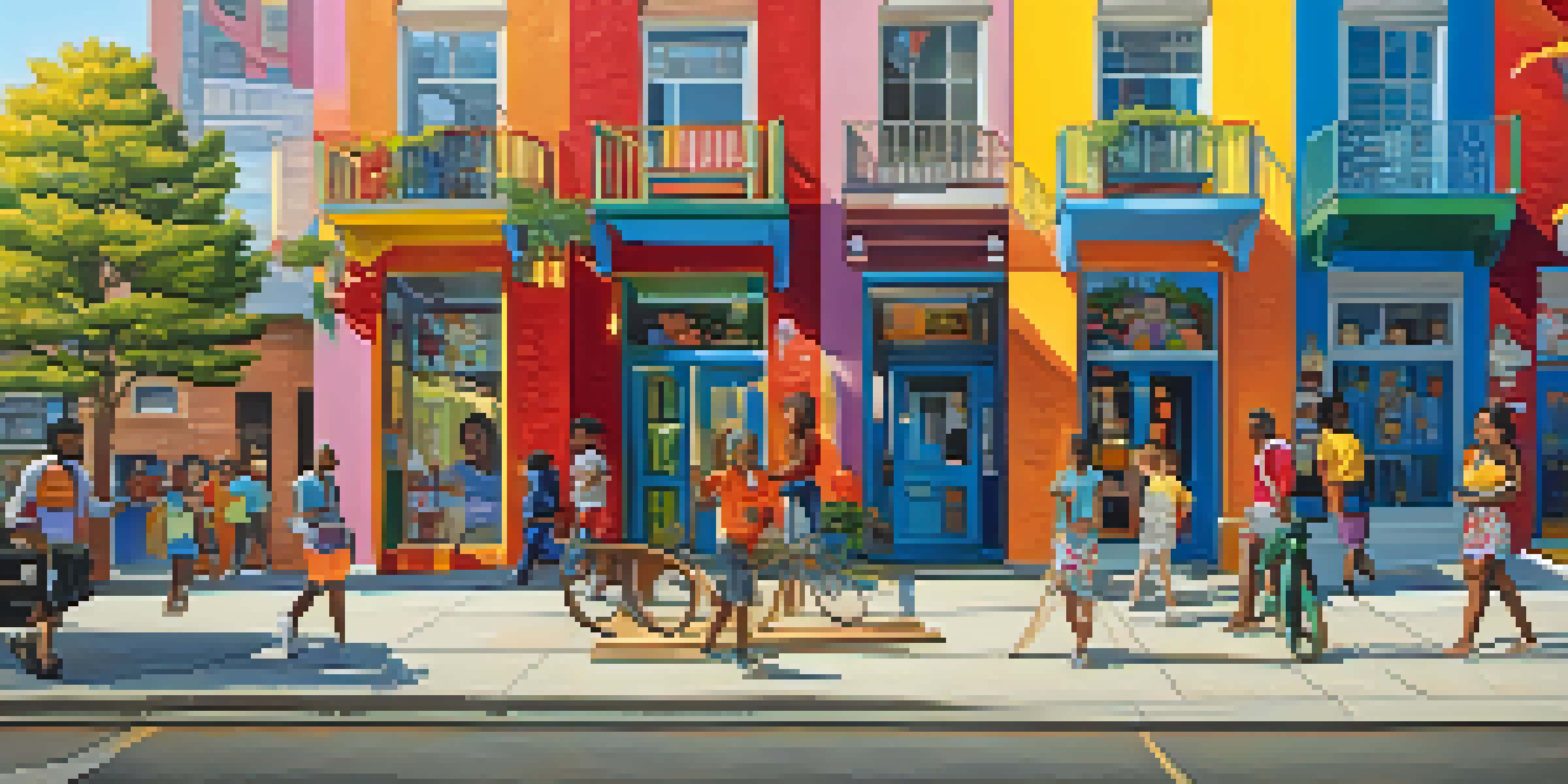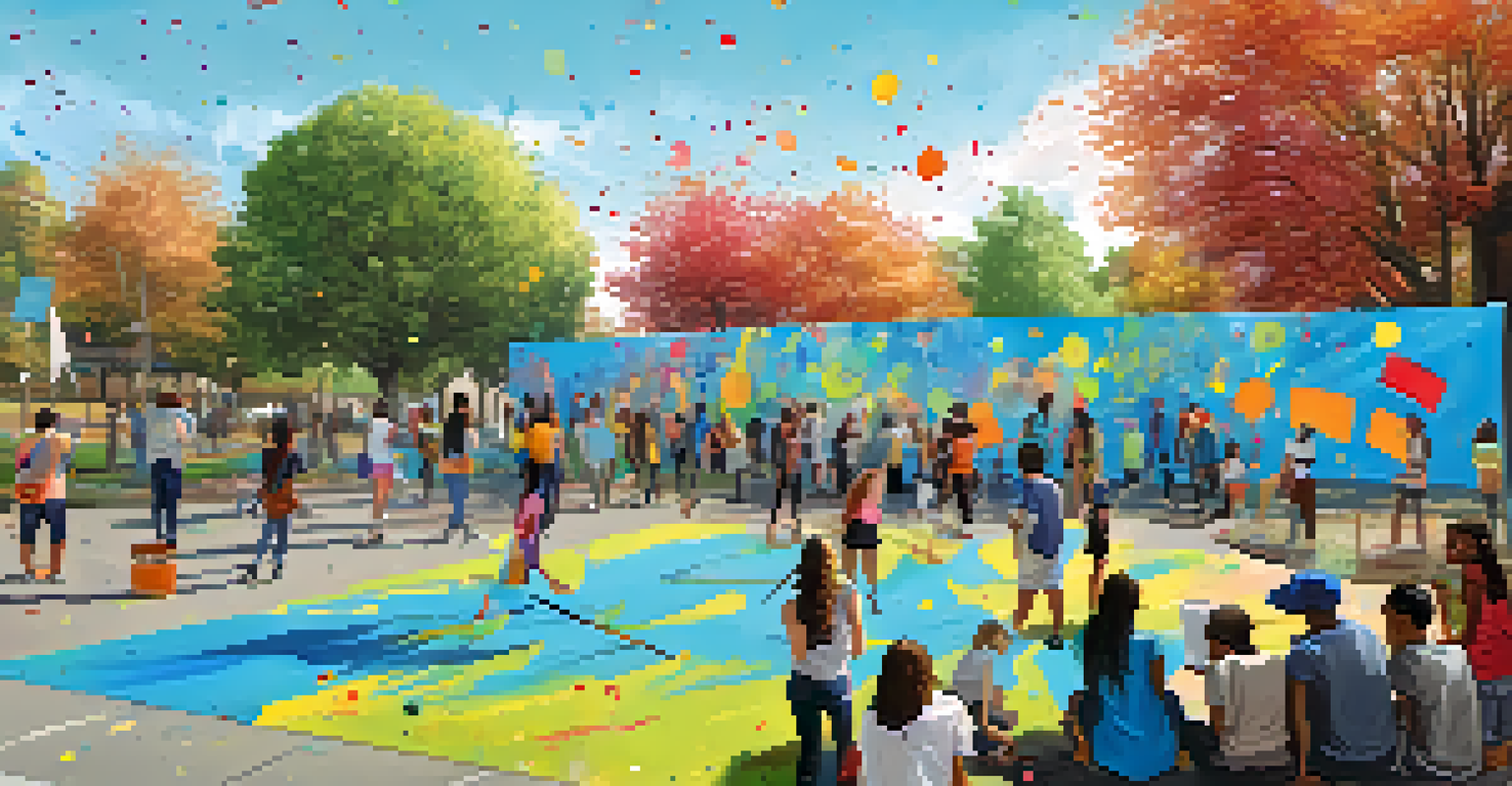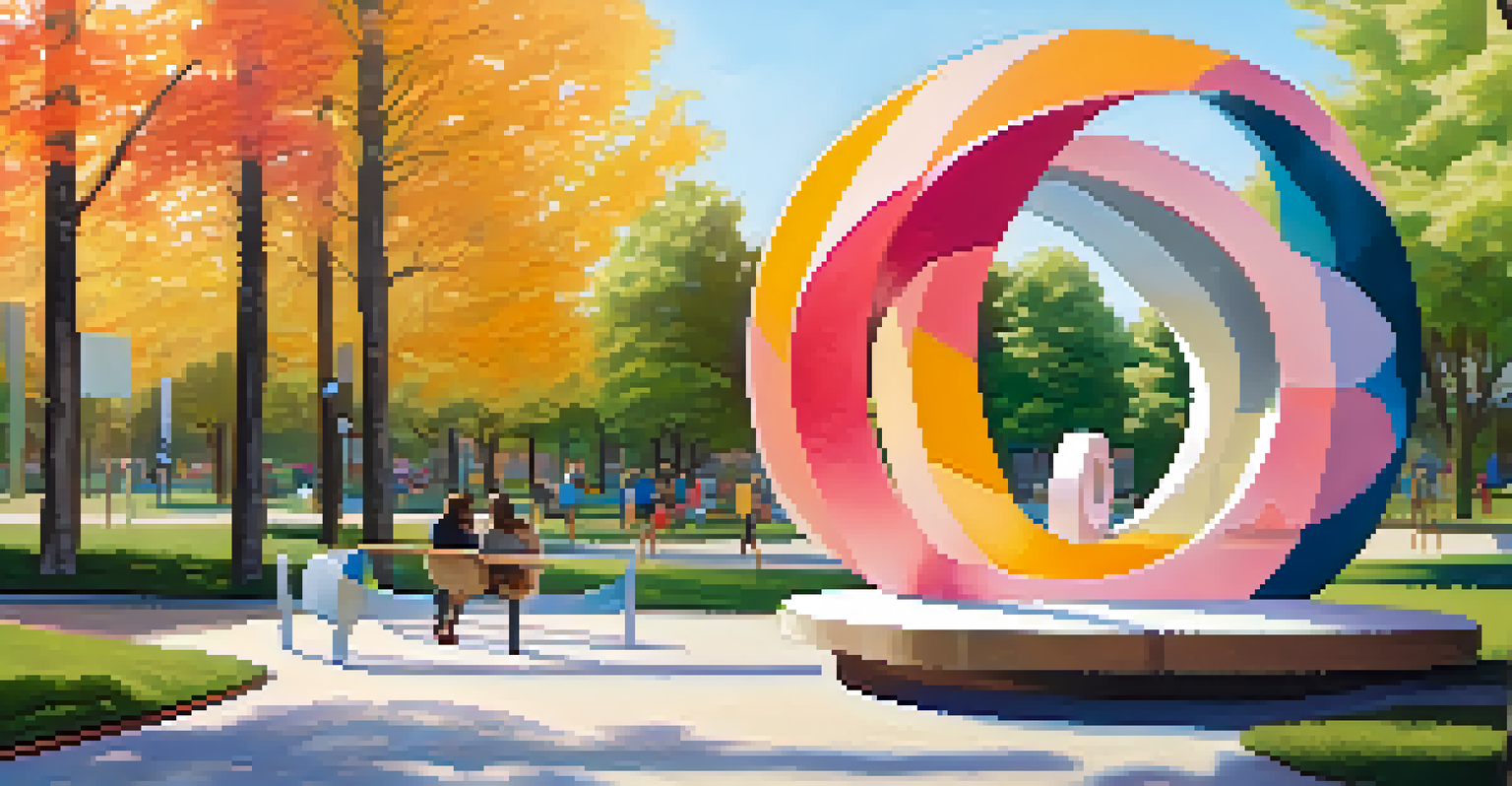Public Art and Social Change: Voices of the Community

Understanding Public Art's Role in Society
Public art serves as a bridge between community expression and social change. It transforms everyday spaces into vibrant platforms for storytelling, sparking conversations that matter. From murals to sculptures, these artistic endeavors reflect local culture and concerns, making them accessible to everyone.
Public art is not just art in public spaces; it is a way to transform those spaces into meaningful places that reflect the community’s identity and values.
Imagine walking down a city street and encountering a mural that tells the story of a neighborhood's history. Such art not only beautifies the area but also fosters a sense of pride among residents. It becomes a point of reference, a visual narrative that connects people to their roots and each other.
In essence, public art is more than decoration; it’s a catalyst for dialogue, encouraging community members to engage with their surroundings and each other. By highlighting social issues, artists stimulate awareness and inspire action, ultimately influencing societal change.
Art as a Voice for Marginalized Communities
For marginalized communities, public art offers a powerful platform to express their stories and experiences. Often overlooked in mainstream narratives, these voices find amplification through creative expression. Art becomes a tool for visibility, shedding light on issues like inequality, discrimination, and resilience.

Consider a mural that depicts the struggles and triumphs of a specific community. This artwork not only honors the past but also invites others to understand their journey. It challenges stereotypes and fosters empathy, bridging gaps between different societal groups.
Public Art Sparks Community Dialogue
Public art serves as a platform for storytelling and social change, connecting people and fostering conversations about local culture and issues.
Through public art, marginalized communities can reclaim their narratives and assert their identities. This reclamation is essential for social change, as it encourages a broader conversation about representation and inclusivity in society.
Collaborative Projects: Bringing Communities Together
Collaborative public art projects are a fantastic way to unite diverse community members. These initiatives often involve local artists, residents, and organizations working together to create something meaningful. The process encourages dialogue and collaboration, fostering relationships among participants.
Art is the most beautiful of all lies; it is a means of expressing things that words cannot express.
Imagine a community mural where residents share their ideas, sketches, and stories. This collaborative approach not only results in a unique piece of art but also strengthens community bonds. Participants often develop a sense of ownership, pride, and responsibility toward their shared space.
Ultimately, these projects highlight the power of collective creativity. They remind us that art can be a unifying force, capable of breaking down barriers and celebrating shared experiences within a community.
Public Art and Youth Engagement
Engaging youth in public art projects is a vital way to nurture future leaders and change-makers. These initiatives provide young people with creative outlets, allowing them to express their thoughts and feelings about the world around them. By participating in artistic endeavors, they gain confidence and a sense of agency.
Consider youth-led murals that address social issues affecting their lives, such as climate change or social justice. When young voices are included in the conversation, the outcomes often reflect their unique perspectives and aspirations. This not only empowers the youth but also enriches the community’s narrative.
Empowering Marginalized Voices
For marginalized communities, public art amplifies their stories and experiences, challenging stereotypes and promoting empathy.
Through these experiences, young participants learn valuable skills in teamwork, communication, and critical thinking. Public art becomes a means for them to engage in social change, making their voices heard in ways that matter.
Art as a Catalyst for Civic Participation
Public art can inspire civic participation, encouraging community members to take an active role in local issues. By reflecting social challenges and aspirations, art fosters a sense of responsibility among residents. This sense of ownership can lead to increased involvement in community initiatives and local governance.
For instance, a public installation addressing environmental concerns might motivate residents to participate in clean-up efforts or sustainability initiatives. The artwork serves as a reminder of collective goals and the importance of working together toward change.
Ultimately, public art can transform passive observers into engaged citizens. By sparking interest and dialogue, it cultivates a culture of participation that is essential for a thriving community.
Public Art and Mental Health Awareness
Art in public spaces can play a significant role in promoting mental health awareness. Creative expressions often tackle themes of struggle, hope, and healing, resonating with many individuals facing mental health challenges. These artworks can provide comfort and connection, reminding people they are not alone in their experiences.
Consider a mural that depicts the journey of mental health recovery. Such visual narratives can break the stigma surrounding mental illness, encouraging open conversations about mental well-being. They serve as a reminder that seeking help is a strength, not a weakness.
Youth Engagement in Creative Projects
Involving youth in public art initiatives nurtures future leaders by providing them with a creative outlet to express their perspectives on social issues.
By integrating mental health themes into public art, communities can foster environments where individuals feel safe to share their stories. This openness can lead to greater understanding and support, ultimately contributing to a healthier, more connected community.
The Future of Public Art and Social Change
As we look to the future, public art will continue to evolve, reflecting the changing social landscape. Artists are increasingly using technology and innovative techniques to engage audiences in new ways. This evolution opens up exciting possibilities for community expression and activism.
Imagine augmented reality experiences that allow viewers to interact with artworks, deepening their understanding of the issues at hand. Such advancements can enhance the impact of public art, creating immersive experiences that resonate on a personal level.

Ultimately, the future of public art lies in its ability to adapt and respond to community needs. By remaining relevant and accessible, public art can keep amplifying voices and driving social change for years to come.